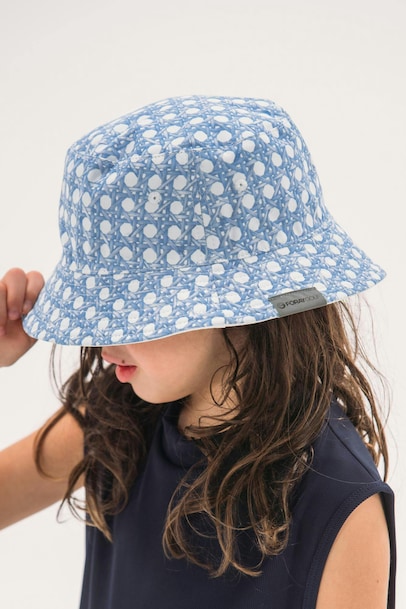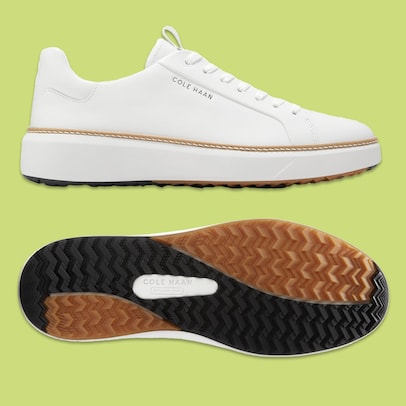Sponsored
How to stock your golf bag to be prepared for any situation on the course this fall

The coveted fall golf season is finally here. It’s one of the most scenic times of year, with leaves turning and crisp winds adding a little extra magic to every round. It’s also a time of year that you can (and will) experience three climates during a single round. Low autumn suns create new blind shots, pop-up rain showers will put your raingear to the test and changing temperatures make proper layering essential.
With the winter months just around the corner, it’s time to make sure you optimize your golf gear to allow you to play as many rounds as possible through the end of the year. This is not the time to allow scattered rain showers to interrupt your scheduled tee time, or to let those new golf shoes that gave you blisters slow you down. Every moment on the golf course is precious this time of year, heading into colder months and shorter days, so it’s essential to be prepared for any tricky situation the skies or course may bring.
Bright Sun
Many golfers would describe a cloudless day as the perfect weather for golf, but without proper eyewear, it can hurt your game. Sunglasses help prevent eye strain and fatigue to help you keep fresh and are essential in protecting the eyes from harmful UV rays. We’d recommend selecting a non-polarized lens with a bronze tint—like the Scheyden CIA Grabber—for better clarity, depth perception and contrast necessary for reading the greens. The experts at Scheyden created a custom dye to colorize the tint of its golf sunglasses to create a perfect blend of contrast and color for golf. It’s also designed to brighten your vision so you can keep them on even in shady parts of the course.
When picking out a pair of golf sunglasses, look for a pair that will fit snugly on the face without any feeling of squeeze or tension. Opt for a pair that wraps slightly around the face to provide coverage for your peripheral vision and more protection from UV rays in the sensitive areas around the eyes.
If you’re looking for a more versatile pair of eyewear that can transition off the course easily but doesn’t sacrifice the eye protection or clarity required for golf, consider the Scheyden Looper frames. With the same high-clarity lens and composite frame material as the CIA Grabber, the Looper is a lifestyle pair of sunglasses that will help, not hurt your golf game.
UV Rays
Before you skip over this section thinking “I already wear sunscreen” take a moment to review your SPF habits head-to-toe. You should be applying sunscreen before you head to the course, and then re-applying about every three holes in full sun AND cloudy conditions. Overcast skies may allow less UV transmission, but does not eliminate UV exposure and damages to skin cells associated. Without UV protection, you also can experience a decrease in mental clarity, alertness and have more cognitive fatigue.
Sun Hats
In addition to applying (and re-applying) sunscreen, wearing sun protective clothing is another good habit to get into. Hats are a great start; ball caps will shade a portion of your face, but wide brimmed hats and bucket hats will extend that coverage to the lower half of the face and parts of the neck.
UPF Golf Clothing
Most golf brands have also expanded their collections to include pieces with UV protection built in. Look for options with UPF engineered in the stitching over pieces finishes with a UPF coating, so the sun protection doesn’t wear down after a few cycles of laundry.
Heat and Humidity
Research shows that heat can lead to a 9 percent drop in performance. When the body temperature increases, your heart has to work harder to keep up with regulating heat so that less oxygen gets to the muscles that power your swing. Dehydration and heat exhaustion can occur in both moderate and dangerous levels—and no good for your golf game. To combat the heat, hydration is key. Drink water before, during and after your round and add extra electrolytes on exceptionally warm days. If you’re having an adult beverage on the course, make sure to chase each drink with at least a glass of water to balance things out.
Electrolyte drinks are great to incorporate into your hydration regime, just be mindful of the ingredient lists of these drinks. Sugar and salt help deliver water to your cells faster, but an excess of either can blur the lines between healthy hydration and adding unnecessary calories that could be saved for a hot dog at the turn instead.
Lightweight, Wicking Materials
The difference between a high quality golf polo versus one that will get in the way of your game often comes down to the fabrics. Moisture- and sweat-wicking weaves keep you ventilated, dry, and cool, even if they offer full body coverage to protect you from wind or sun. Avid golfers will want to look for technical fabrics that offer four-way stretch and antimicrobial properties that come from quick-drying, natural or treated fibers.
Cloudy with a chance of rain
Light rain showers can pop up at any time during any season. Some days you’ll tee off with clear skies only to be met with rain by the time you’re putting. For scattered showers, full raingear isn’t always the most practical or comfortable, so opt for water-resistant gear and a lightweight packable jacket. We’ll get into more heavy-duty raingear in the next section, but one item that will always come in handy whenever rain is a factor is an extra pair of socks. Especially if the skies bring on-and-off showers, an extra pair of socks will give you a refreshed feel post-rain to keep you going for the rest of your round.
Rain-ready
Regardless of how much precipitation is on the radar, it’s always good to pack a sturdy pair of rain-ready golf shoes. Even a small sprinkling requires a golf shoe that offers some traction. For days that call for light rain, a spikeless outsole can still offer you the grip and comfort you need, and a zero drop heel with water-resistant uppers can ensure you have the protection you need to keep playing. For heavier showers you’ll want to make sure your golf shoes are water-proof to withstand all-weather, while an above-the-ankle or boot cut design offers you more coverage and stability. A more spiked design here will keep you grounded and prove easier to clean post-round.
What about heavy rain showers?
Being prepared for heavy rain is a bit of a flex in the golf world to be the most rain-ready golfer in the group. Waterproof jackets are essential, as are rain paints with easy on-off functionality. In addition to being waterproof, look for raingear that has ventilation to help regulate body temperature, has zippers secured under a waterproof flap, covered pockets, and jackets with an extended collar to prevent rain drops from rolling down your neck.
Don't lose your grip
We can’t stress enough the difference a good rain glove will make during wet rounds. These gloves will prevent the club from slipping out of your hands and are made with material that move water away from your skin and dry quickly, so your hands won’t feel soggy.
Extra towels are also great to have on hand when the rain just won’t stop. One towel just isn’t enough because once it is saturated with water, you can’t use it anymore. If you know your next round will be a rainy one, we recommend putting an extra few towels in a sealed ziplock or waterproof valuables bag to keep it dry until you need it. Many of our editors also recommend a tacky towel like the Gorilla Golf towel that enhances grip in any weather, without leaving a residue behind.
Raingear and gloves are an obvious choice for rainy rounds, but don't forget some head coverage—for both you and your bag. Pack a waterproof cap that won't weigh you down, a sturdy wind-proof umbrella for coverage between shots and if a rain hood didn't come with your golf back, pick one up to keep the sticks safe, too.
Injuries and blisters:
Almost everyone will run into the occasional blister on the course. Maybe you haven’t played in a while and your hands aren’t in “golf shape,” or you’re breaking in a new pair of shoes that are bothering your heels. Either way, these tiny lesions are a nuisance and can really impact your golf swing. Tape, band-aids, and blister patches are lightweight and easy to store in your golf bag at all times.
RELATED: 6 products to help you get loose before off-season rounds
Miscellaneous:
Besides the basic rain, sun, and injury-related products, there are a few more items you might want to keep in your bag. Whether your rangefinder dies and you need extra batteries, or you need protection from mosquitos, or you just need a pouch to store the items listed above, these handy products will help keep external factors at bay, so you can focus on your golf game.








































